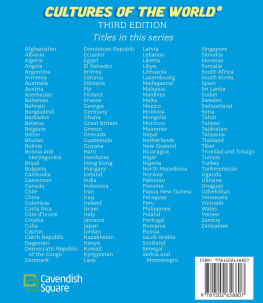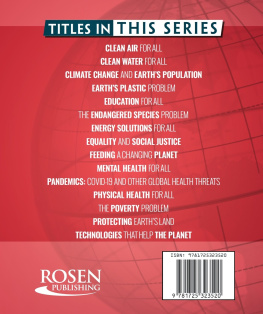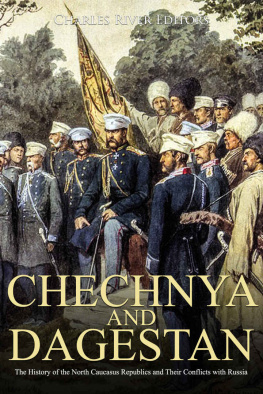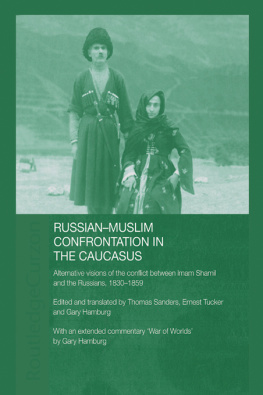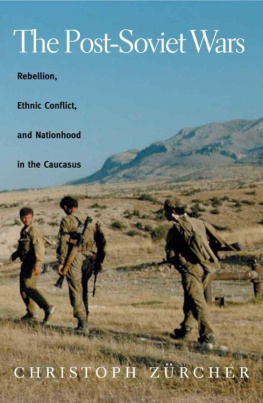
Published in 2021 by Cavendish Square Publishing, LLC
243 5th Avenue, Suite 136, New York, NY 10016
Copyright 2021 by Cavendish Square Publishing, LLC
Third Edition
No part of this publication may be reproduced, stored in a retrieval system, or transmitted in any form or by any meanselectronic, mechanical, photocopying, recording, or otherwisewithout the prior permission of the copyright owner. Request for permission should be addressed to Permissions, Cavendish Square Publishing, 243 5th Avenue, Suite 136, New York, NY 10016. Tel (877) 980-4450; fax (877) 980-4454.
Website: cavendishsq.com
This publication represents the opinions and views of the author based on his or her personal experience, knowledge, and research. The information in this book serves as a general guide only. The author and publisher have used their best efforts in preparing this book and disclaim liability rising directly or indirectly from the use and application of this book.
All websites were available and accurate when this book was sent to press.
Cataloging-in-Publication Data
Names: Beliaev, Edward. | Buranbaeva, Oksana. | Morlock, Rachael.
Title: Dagestan / Edward Beliaev, Oksana Buranbaeva, and Rachael Morlock.
Description: New York: Cavendish Square, 2021. | Series: Cultures of the world
Identifiers: ISBN 9781502658807 (library bound) | ISBN 9781502658814 (ebook)
Subjects: LCSH: Dagestan (Russia)--Juvenile literature. | Dagestan (Russia)--Description and travel. | Dagestan (Russia)--History--Juvenile literature. | Dagestan (Russia)--Social life and customs.
Classification: LCC DK511.D2 B454 2021 | DDC 947.52--dc23
Writers, third edition: Edward Beliaev, Oksana Buranbaeva, Rachael Morlock
Editor, third edition: Rachael Morlock
Designer, third edition: Jessica Nevins
Picture Researcher, third edition: Jessica Nevins
Acknowledgments:
Edward Beliaev and Oksana Buranbaeva wish to thank Rimma Buranbaeva for her research assistance.
PICTURE CREDITS
The photographs in this book are used by permission and through the courtesy of: Cover Cholpan/ alessandro0770/iStock/Getty Images Plus.
Some of the images in this book illustrate individuals who are models. The depictions do not imply actual situations or events.
CPSIA compliance information: Batch #CW21CSQ: For further information contact Cavendish Square Publishing LLC, New York, New York, at 1-877-980-4450.
Printed in the United States of America



W ITH MUCH OF ITS LAND SANDWICHED BETWEEN MOUNTAINS and sea, the Republic of Dagestan is a beautiful but imposing place. Dagestans harsh landscape has had a powerful impact on the course of the republics history and the people who live there. A long parade of conquerors and invaders have entered Dagestan seeking land, resources, and access to the countries beyond its borders. That line of invaders began with the Persians in the sixth century and ended with the Russians in the 19th century. Today, Dagestan represents the southernmost reaches of the Russian Federation.
LAND OF MOUNTAINS
Over half of Dagestan is made up of rugged, mountainous terrain. It is difficult to cross, even with modern paved roads and well-equipped vehicles. The mountains rising throughout the southern half of Dagestan belong to the Greater Caucasus mountain range. In their upper reaches, mountain glaciers feed the regions mighty waterways. An extensive system of rivers carve through breathtaking gorges and canyons before emptying into the Caspian Sea.
For centuries, Dagestanis have creatively navigated the mountainous terrain. Early indigenous groups relied chiefly on raising livestock like sheep, goats, and cattle. Shepherds made seasonal migrations with their herds. They lived on the mountainsides in the spring and summer and traveled to lower pastures as colder temperatures set in. A system of using distant, seasonal pastures is still in practice for those who raise livestock in Dagestan today. Ancient peoples with access to Dagestans limited arable land used terrace farming to make the most of the challenging environment. This strategy, along with extensive irrigation systems, is also a major part of the agricultural industry in modern Dagestan.

Dagestans landscape is a study in contrasts from snow-covered peaks to blooming valleys and from rushing rivers to rolling sand dunes. The Andysky-Salatau mountain range is pictured here.
SEAWAYS AND THOROUGHFARES
The current republics of the North Caucasus region, including Dagestan, have a dynamic history of shared allegiances, struggles for independence, and indigenous ethnicities. They have been the subject of repeated wars. Empires in search of trading routes, radicals fighting holy wars, rulers looking to expand their domain, and soldiers seeking military advantages all pursued their own agendas against the backdrop of the North Caucasus region.
Dagestan was particularly desired by outsiders because of its strategic location. The port city of Derbent in southern Dagestan, one of the oldest cities in Russia, was the gateway to the Caucasus. Positioned on the coast of the Caspian Sea near a critical mountain pass, Derbent was an important stop along the Silk Road trade route. Travelers, merchants, and armies crossing between Europe and the Middle East passed through Derbent. The city was besieged by Caucasian Albanians, Persians, Khazars, Arabs, Seljuk Turks, Azeris, Mongols, and the Russian Empire at various points in its long timeline.

The Caspian Sea forms Dagestans eastern border. This important natural landmark makes sea routes for trade and transportation possible between Dagestan and its neighbors.
For Dagestanis, the Caspian coastline continues to be an important center of collective history, cultural exchange, and natural resources. Two of Dagestans most important modern cities, Derbent and Makhachkala, are situated on its shores. The Caspian Sea offers plentiful economic resources for Dagestan, with its rich oil and natural gas reserves, critical habitat for native species, and popular seaside tourist attractions.
MANY ETHNICITIES
Dagestan is remarkable for its range of cultures and languages as a multinational republic. It is the most ethnically diverse entity in the Russian Federation. Members of more than 30 indigenous ethnic groups and 110 nationalities live in Dagestan. The republic has 14 official languages belonging to the 14 most populous ethnic groups in the area. The five largest ethnic groups are Avars, Dargins, Kumyks, Lezgins, and Laks.
Indigenous peoples, their unique cultural and religious traditions, and their interaction with outside powers have created a deep legacy in Dagestan. Five locations in Derbent are designated as UNESCO World Heritage Sites because of their historic and cultural importance. These include the ancient wall of Derbent, the Derbent Lighthouse, the Juma Mosque, Naryn-Kala in the Derbent Fortress, and the Armenian Church of the Holy Savior.

